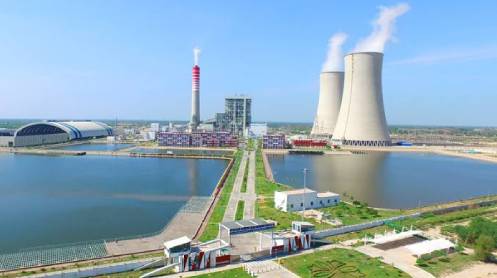If there’s one lesson Pakistan’s policymakers can learn from the ongoing tumult in the international energy markets, it is to look for economical and reliable substitutes to the expensive import-based fuel mix for tackling longstanding power sector challenges: availability, affordability and accessibility.Energy prices have shot through the roof and suppliers cancelled their long term contracted LNG shipments on Covid-related supply chain disruptions exacerbated lately by the Russian-Ukraine conflict, underlining how vulnerable Pakistan’s energy security is to the global price and supply volatility.
The previous Nawaz Sharif government had attempted to address the energy security challenges by encouraging relatively cheaper coal and gas imports for electricity production and industrial use. The policy made sense at that time due to the lower prices of these fuels. Imported coal was available for much under $100 per tonne and LNG at approximately $10-13 metric million British thermal units, until the recent commodity supercycle pushed energy prices to climb new peaks. Simultaneously, it also sought to exploit indigenous coal discovered in Thar and renewables to cut reliance on fuel imports.
Nawaz Sharif was successful in removing generation capacity bottlenecks with the help of massive Chinese loans, but he was unable to address challenges of affordability and accessibility due to overdependence on imported energy for power production. The economy continues to face blackouts to this day despite excess generation capacity since we’re always short of dollars to pay for energy imports.
The country accrued economic losses of around 2pc of GDP per annum owing to crippling power shortages in the late 2000s and 2010s. Are we headed there again?
Among other factors, ballooning energy imports are significantly contributing to the current account deficit and accumulation of fiscally unsustainable debt in the energy chain, or ‘circular debt’, to over Rs2.3 trillion in nine years. Higher electricity tariffs are suppressing demand and encouraging power theft and widespread defaults on bills. The expensive power is also compelling the government to heavily subsidise textile exporters to ensure their international competitiveness.
Rising global energy prices also forced Imran Khan to cap the prices for four months through June to provide temporary ‘relief’ to the people to win over their support ahead of a no-confidence vote called to remove him from power.
With the international energy prices still hovering closer to their recent peaks and unlikely to settle down any time soon, and the government’s ability to procure enough oil, LNG and coal to meet electricity demand hampered by diminishing foreign currency reserves, this summer isn’t going to be easy.
According to official estimates, the country accrued economic losses of around 2pc of GDP per annum due to crippling power shortages in the late 2000s and 2010s. Have we headed there again? Most likely unless we pull our act together.
Also, we cannot rule out further multiple tariff hikes going forward as the government would want to cut its losses and recover full energy costs. There’s no shortcut to our power woes; Pakistan must rapidly shift to indigenous, inexpensive fuel sources to overcome affordability and accessibility challenges. Or the people will continue to groan under ever-inflating electricity bills and Pakistan’s exports becoming less competitive.
With indigenous gas reserves forecast to run out in a decade, Thar lignite is the only viable option for Pakistan to pursue to displace imported fuels for sustainable economic revival. Many of us would like to see the development of clean, renewable energy sources to replace dirty fossil fuels. But that isn’t possible in near future. Globally, the renewables form a small part of energy sources despite the reduction in solar and wind power technology prices. Power sector consultants say this shift has to be gradual and won’t be possible without radical improvements in existing technologies. The renewables remain ‘intermittent nature electric power’ and cannot replace base-load fuels due to associated costs of their seasonality, storage, transmission and distribution.
That leaves us with the only option of using Thar lignite reserves whose heating value, according to Sindh Engro Coal Mining Company (SECMC) CEO Amir Iqbal, is estimated to be greater than the combined oil reserves of Saudi Arabia and Iran. Thar lignite is the cheapest indigenous energy resource with its 175.5 billion tonne reserves having the potential to produce over 100,000-megawatt electricity for 30 years to help make Pakistan’s energy self-sufficient.
“The recent energy market disruptions and the sharp spike in fuel prices should be a wake-up call for us,” says Mr Iqbal. Currently, 3.8 million tonnes of lignite are being extracted annually from Thar, supporting the production of 660 megawatts from the mine-mouth power plants. The coal production is billed to double to 7.6m tonnes by the end of this year and 12.2m tonnes by the end of next. So will mine-mouth generation capacity accordingly.
Thar lignite is costing $60 per tonne now. The planned increase in coal production will bring the price to under $50 by the end of this year and below $30 before the close of next. “This compares with imported coal rates that recently spiked to well above $420 from around $100-120 per tonne due to the commodity supercycle,” Mr Iqbal says, pointing to massive dividends the shift to indigenous coal can bring to the dollar-starved government in the form of foreign exchange savings and consumers through a huge reduction in generation cost while sustainably reviving the economy. “Besides, it will also shield us from global energy supply disruptions seen in the recent months,” he argues.
In Pakistan coal power constitutes just about 12pc of the total generation capacity of over 39,700 megawatts. In comparison, in countries like China, India and the US, where base-load demand is high, coal power dominates their energy profile. India coal accounts for 65pc of the energy mix and it is planning investments worth billions of dollars in coal projects to exploit domestic lignite sources and curb fuel imports.
The cost of electricity being produced by Thar coal is Rs18kWh (kilowatt-hour), which will drop by a third to Rs12 in two years once lignite cost reduces with the expansion in its extraction. This compares with well over Rs30kWh generation price for the Sahiwal plant using imported coal. The Port Qasim coal power plant is already mixing Thar lignite and will completely shift onto it once its production is scaled up.
SECMC has already commissioned a study in collaboration with the Private Power and Infrastructure Board for gradually converting China-Pakistan Economic Corridor coal plants in Hub, Jamshoro and Sahiwal to indigenous lignite. A 105km long Thar Rail project being planned to connect Islamkot with Main Line will soon be undertaken to transport lignite to the power plants in the rest of the country. That will make the substitution of imported fuels with cost-effective indigenous sources feasible and faster.
There are no two opinions that indigenous coal can turn Pakistan into an energy secure country and help make electricity affordable for industrial and economic growth, as well as lift the lifestyle of its citizens.
“Indigenous coal can be our saviour but that requires long term thinking and policies. It is time we develop a sustainable strategy for our strategic energy security and produce affordable power to support our economic growth,” contends the SECMC chief.





